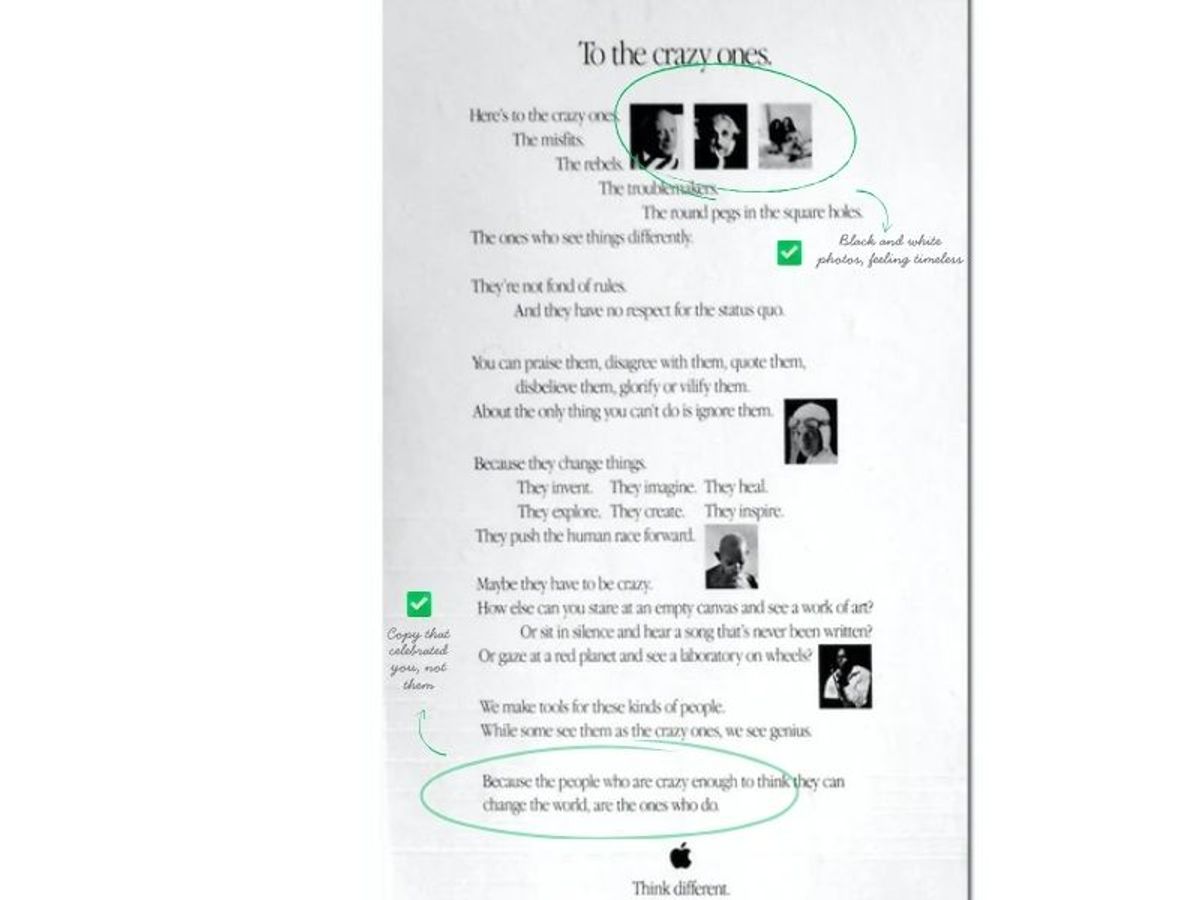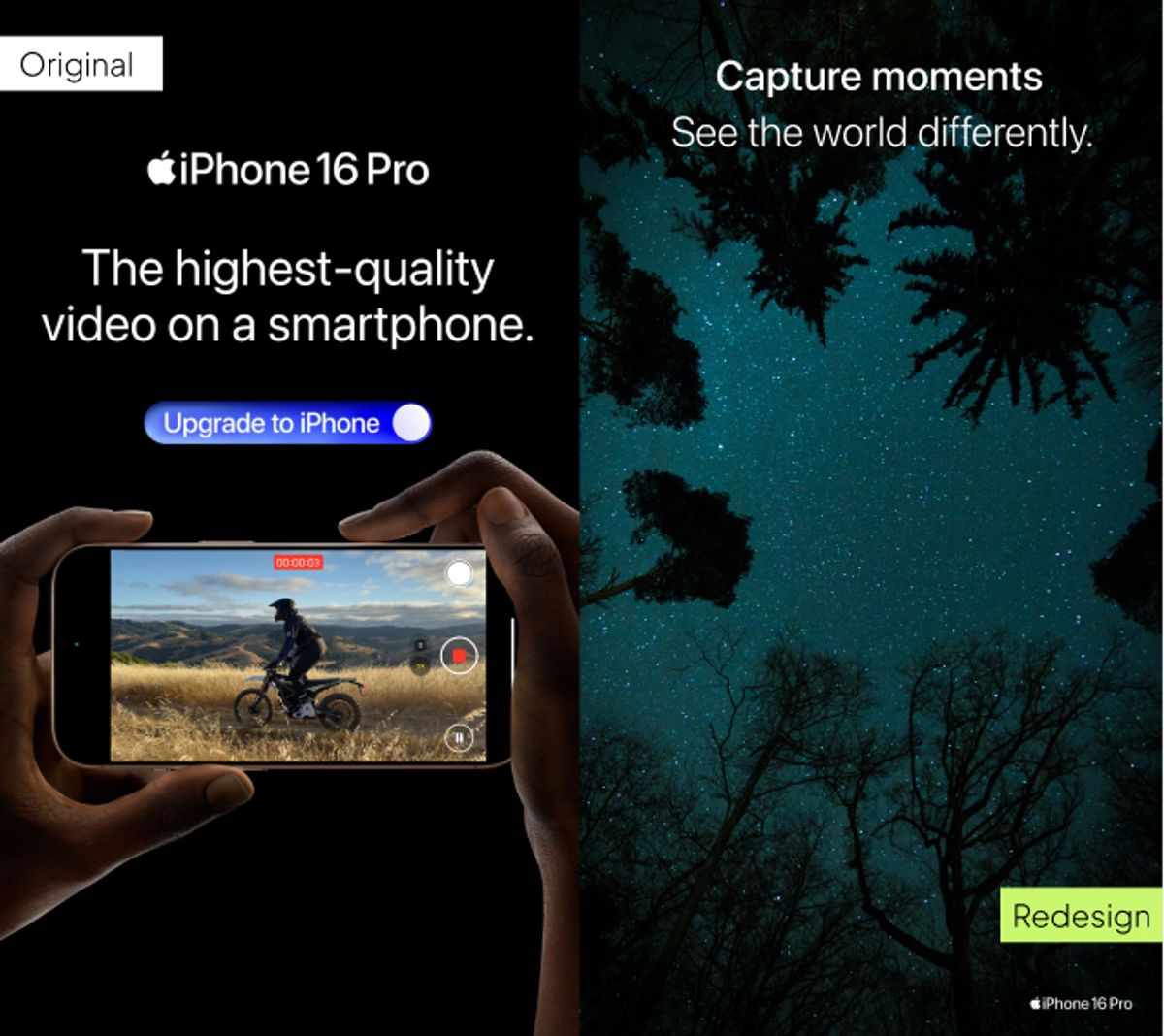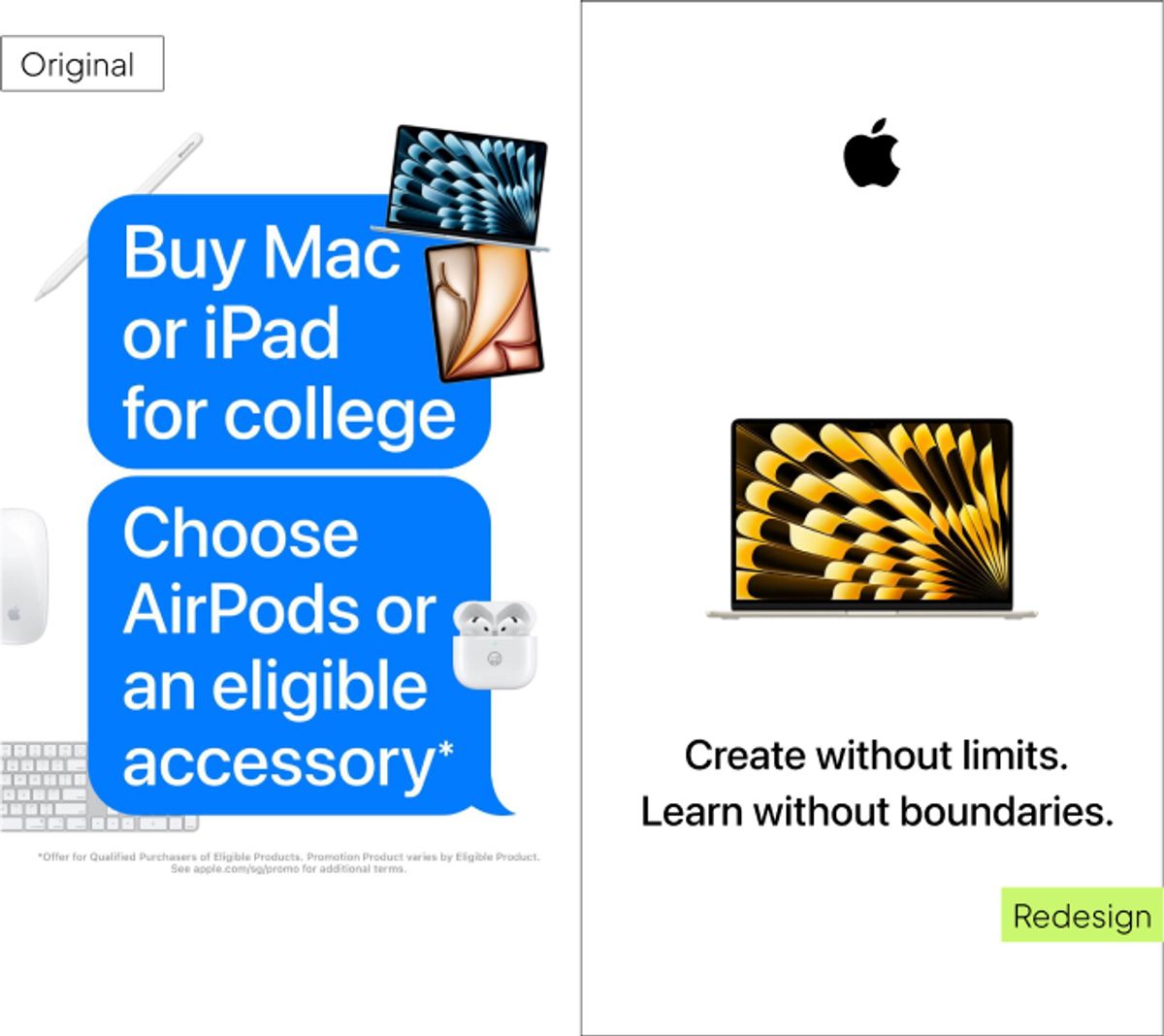
September 01, 2025 • 6 min read

September 01, 2025 • 6 min read
Rahul Mondal
Product & Strategy, Ideon Labs
How the world's most valuable company went from whispering possibilities to shouting "Buy now!"
Apple's marketing strategy tells one of advertising's most dramatic transformation stories.
Picture this: It's 1984. A woman hurls a sledgehammer at Big Brother's screen, and suddenly everyone knows about Macintosh without seeing a single product shot or price tag. Fast-forward to 2024, and Apple's latest ad spends 30 seconds listing camera specs, storage options, and financing deals before screaming "Upgrade today!"
What happened to the company that once made advertising feel like falling in love? The answer lies in how Apple's marketing strategy completely transformed. And the change is more dramatic than you think.
In Apple's early advertising era, every campaign was a masterclass in aspiration. Take their classic print advertisements from the 1970s and 80s – they didn't tell you what to buy. They whispered: "You're interesting enough to figure this out."

Iconic Red Apple logo accompanied by "Simplicity is the ultimate sophistication."
This wasn't advertising. This was inspiration.
The "Think Different" campaign perfected Apple's inspirational approach. Einstein, Gandhi, Picasso – not a single Apple product in the entire campaign. Instead, Apple positioned themselves as the choice for rebels, dreamers, and misfits.

"Think Different" campaign by Apple
The message was powerful: "You don't need us. We need people like you."
That's the ultimate inspiration – making someone feel chosen rather than targeted.
Early Macintosh ads treated the computer as a supporting character in your story of creativity and rebellion. The visuals focused on human potential, not processor speed. This Apple marketing strategy made owning a Mac feel like joining an exclusive club of innovators.
The psychology was brilliant: When you make customers feel special before they buy, they'll pay premium prices to maintain that identity.
The iPhone's massive success rewrote Apple's entire playbook. Suddenly, their marketing strategy shifted from targeting a devoted cult following to appealing to mainstream audiences with quarterly earnings pressures.
The advertising shifted accordingly – and the visuals tell the story.
Look at Apple's current advertising ecosystem and witness the transformation:
Today's iPad ads: "Love how you learn" – still attempting emotion, but immediately followed by product shots, feature lists, and app demonstrations.
Current iPhone campaigns: Direct messaging like "L'esprit tranquille. Même hors réseau" with prominent product placement and technical features front and center.
Mac advertisements: "Buy Mac or iPad for college" with clear pricing, bundle offers, and urgent calls-to-action.

Current Apple Advertisements - focusing on product and pricing
The advertising shifted accordingly – and you can see the transformation in their current campaigns.
Look at Apple's modern advertising and witness the change. Today's iPad ads still attempt emotional connection with "Love how you learn," but they immediately follow with product demonstrations and feature lists. Current iPhone campaigns use messaging like "L'esprit tranquille. Même hors réseau," yet the focus has shifted to prominent product placement and technical capabilities.
Where classic Apple ads used white space like punctuation and treated every word as precious, modern campaigns cram multiple messages, products, and offers into every frame. The shift from whispered confidence to shouted specifications is impossible to miss.
When Apple inspired, customers listened intently. The minimal, artistic approach created several psychological advantages:
Scarcity perception: Exclusive brands feel more valuable Identity alignment: Customers bought into a worldview, not just a product Premium justification: Aspirational brands can command higher prices Word-of-mouth amplification: People love sharing discoveries they "figured out"
Today's direct approach might drive short-term sales, but it erodes long-term brand mystique:
The shift from seductive to transactional advertising is a pattern we see repeatedly across successful tech companies as they mature from disruptors to market leaders.
The solution isn't to abandon product benefits – it's to wrap them in human stories that make people feel chosen again.
With our platform Vibemyad, we have redesigned current Apple advertisements in their old way.

Apple's Iphone 16 Pro Ad vs Redesigned Ad by Vibemyad

Apple's Mac/Ipad Ad vs Redesigned Ad by Vibemyad
See how successful brands still use inspirational marketing in our curated collection of campaigns that prioritize emotion over information.
While Apple shouts specifications, other brands have mastered the whisper:
These brands understand what Apple once knew: The most powerful marketing doesn't convince – it inspires.
Compare these approaches with Apple's current strategy to see exactly how emotion-driven marketing outperforms feature-focused advertising.
Apple's transformation from inspirational mystery to pushy salesperson isn't permanent. The brand that once made technology feel like magic can rediscover their ability to whisper instead of shout.
But it requires courage – the courage to stop optimizing every ad for immediate conversions and start building long-term desire again.
The most successful relationships aren't built on listing your good qualities.
They're built on making the other person feel irreplaceable.
Apple once made us feel irreplaceable for choosing them. Now they just want us to choose them.
The question isn't whether they can afford to inspire us again.
The question is whether they can afford to keep chasing us.
Want to dive deeper into Apple's complete marketing strategy evolution? Explore our comprehensive Apple advertising collection on VibeMyAd featuring campaigns from 1976 to today. See the exact moment when inspiration became sales pitches.
Ready to apply these insights to your own brand? Join VibeMyAd and access our database of breakthrough campaigns to identify what makes advertising truly inspirational.
Understanding what makes iconic brands successful can transform your own marketing approach. These deep-dive analyses reveal the strategies behind industry leaders:
Discover Nike's marketing approach, where the battle between celebrity endorsements and performance-driven campaigns shapes athletic wear advertising.
See how Liquid Death's advertising strategy completely transformed the beverage industry with unconventional tactics.
Learn what happens when TikTok trends outperform million-dollar campaigns and why brand monitoring has become essential.
Navigate Meta's Andromeda update that's reshaping Facebook advertising, and discover how to adapt your campaigns for continued success in an evolving digital landscape.

Ananya Namdev
Content Manager Intern, IDEON Labs

Rahul Mondal
Product & Strategy, Ideon Labs

Rahul Mondal
Product & Strategy, Ideon Labs
Get notified when new insights, case studies, and trends go live — no clutter, just creativity.
Table of Contents